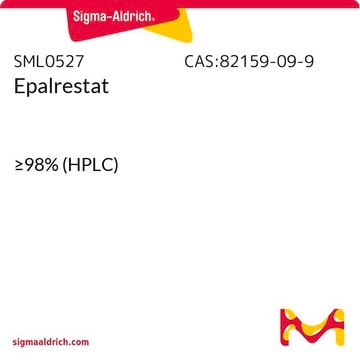S4441
D,L-Sulforaphane
≥90% (HPLC), liquid, phase II detoxification enzymes inducer
Synonym(s):
1-Isothiocyanato-4-(methylsulfinyl)-butane
About This Item
Recommended Products
product name
DL-Sulforaphane, ≥90% (HPLC), synthetic, liquid
biological source
synthetic
Assay
≥90% (HPLC)
form
liquid
solubility
DMSO: soluble 40 mg/mL
H2O: insoluble
compatibility
for use with ABI 7500
shipped in
dry ice
storage temp.
−20°C
SMILES string
CS(=O)CCCCN=C=S
InChI
1S/C6H11NOS2/c1-10(8)5-3-2-4-7-6-9/h2-5H2,1H3
InChI key
SUVMJBTUFCVSAD-UHFFFAOYSA-N
Application
Biochem/physiol Actions
Storage Class Code
10 - Combustible liquids
WGK
WGK 3
Personal Protective Equipment
Certificates of Analysis (COA)
Search for Certificates of Analysis (COA) by entering the products Lot/Batch Number. Lot and Batch Numbers can be found on a product’s label following the words ‘Lot’ or ‘Batch’.
Already Own This Product?
Find documentation for the products that you have recently purchased in the Document Library.
Customers Also Viewed
Articles
DISCOVER Bioactive Small Molecules for Nitric Oxide & Cell Stress Research
Our team of scientists has experience in all areas of research including Life Science, Material Science, Chemical Synthesis, Chromatography, Analytical and many others.
Contact Technical Service










